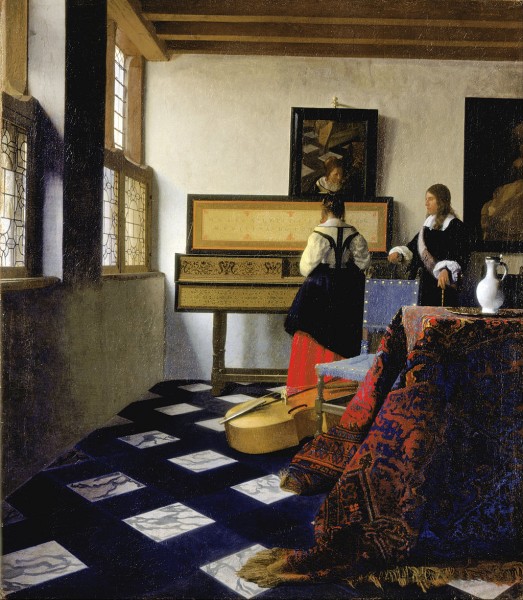 © 2014 Sally Whitman Coleman, PhD. All rights reserved.
© 2014 Sally Whitman Coleman, PhD. All rights reserved.
In Tim’s Vermeer, now showing in movie theaters around the country, Tim Jenison, a successful inventor and software engineer attempts to prove that Jan Vermeer, the 17th-century painter from Delft, used a mechanical device to create his images. In this highly engaging and entertaining film, directed by Penn Jilette of Penn & Teller fame, with the example of Jenison we see what a brilliant and curious person can accomplish. Indeed, the Texas-based Jenison is such an endearing and fascinating individual that the audience naturally wants him to succeed.
As an admirer of Vermeer’s work, Jenison tried to discover how the Dutch artist was able to achieve a photographic quality in his painted interiors. Most art historians agree that Vermeer used a camera obscura, a type of shadow box with a lens, to assist in recreating his scenes; however, the image cast from a camera obscura is black and white. Jenison wanted to know how Vermeer was able to produce tonal and color values with such uncanny realism, and so after years of thoughtful analysis, he in invented a contraption that he hypothesized may be similar to something Vermeer used in connection with the camera obscura. To test his hypothesis, he reproduced a Vermeer painting.
The movie is extremely well done; it is entertaining and Jenison’s thesis is compelling the way it is presented in the film. Jenison makes some essential points that support his investigation, the most significant being that art is a document and we can find everything we need to know about a work of art within the art itself. His thesis also is well supported because Delft was a center for optics in the 17th century. In addition, the convex mirror, the use of which is so critical to Jenison’s theory, does appear in northern European art, often closely identified with an artist, as in the case of Jan van Eyck.
From an art historical viewpoint, my only concern is that Vermeer is not given enough credit for his artistic accomplishments. That the artist used some type of device is easily accepted, but that does not preclude artistic agency. The proof of this is in Jenison’s “Vermeer,” which matches the Old Master’s photographic quality but does not come close to Vermeer’s creative or artistic quality. The essence and the aura of the image cannot be reproduced. The only one who can paint a Vermeer is Jan Vermeer.


